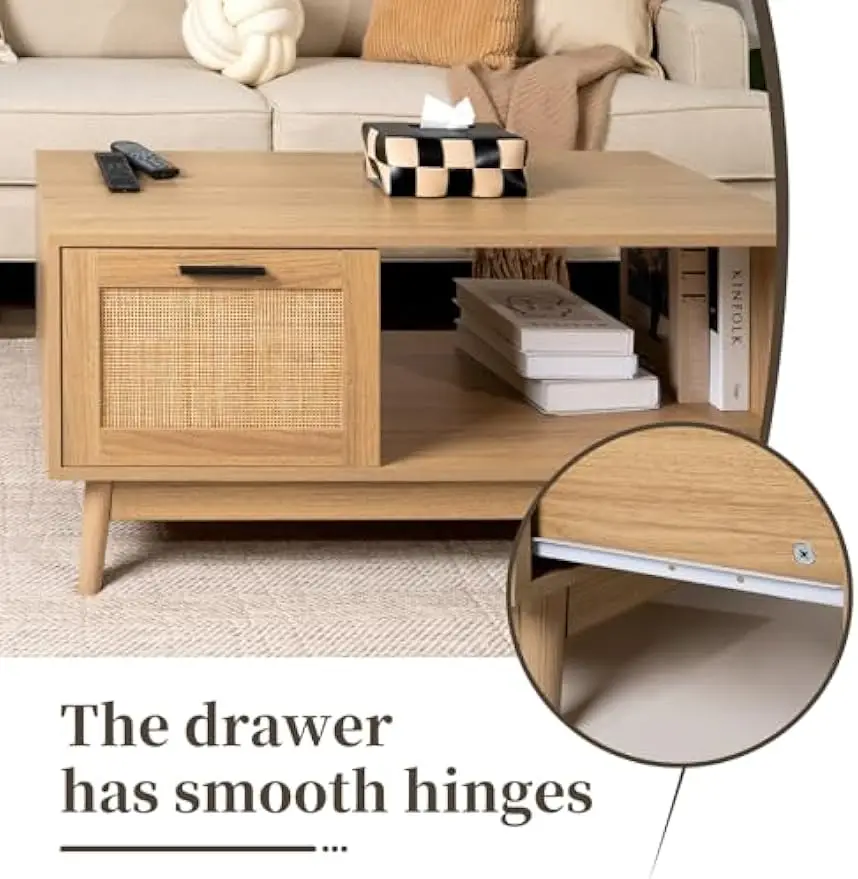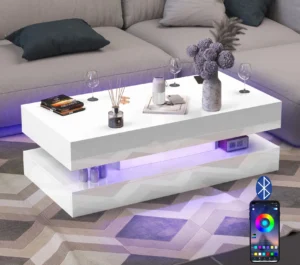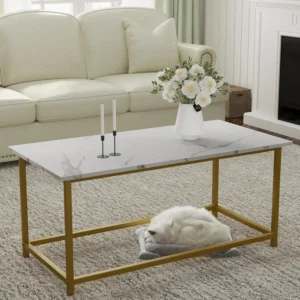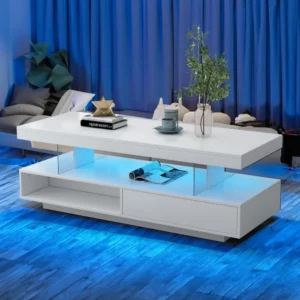Introduction: Celebrating the Timeless Beauty of Walnut Coffee Tables
In the heart of every well-designed living space sits an anchor piece that ties the room together—and often, that centerpiece is a walnut coffee table. More than just functional furniture, these tables serve as the gathering point for conversation, relaxation, and everyday living. Walnut’s distinguished character—with its rich chocolate browns, subtle purple undertones, and striking grain patterns—creates an immediate sense of warmth and sophistication that few other woods can match.
What makes walnut truly special is its remarkable versatility. Despite its distinctive appearance, walnut complements virtually any design style, from classic traditional to sleek contemporary. Its natural durability means these pieces often become family heirlooms, developing a gorgeous patina that enhances their beauty over decades of use. This combination of visual appeal and longevity makes walnut coffee tables a particularly wise investment for discerning homeowners.
In this guide, we’ll explore the most impressive walnut coffee table designs available today, from mid-century modern classics to innovative contemporary pieces. Whether you’re drawn to clean lines, organic shapes, or functional storage solutions, we’ll provide expert insights to help you select a piece that will serve as both a practical surface and a stunning design statement. At Hearth Forms, our appreciation for timeless black mid-century coffee tables reflects our broader commitment to authentic design principles and natural materials that transform everyday spaces.
The Distinguished Character of Walnut Wood: Nature’s Premium Furniture Material
Walnut wood stands in a class of its own among furniture materials, offering a unique combination of beauty, strength, and character that has made it prized by craftspeople for centuries. Understanding what makes this wood so special helps explain why it commands premium prices and continues to be the material of choice for heirloom-quality coffee tables.
The visual signature of walnut begins with its remarkable color range. Unlike more uniform woods, walnut presents a natural spectrum from deep chocolate browns with subtle purple undertones to lighter amber and honey tones, often within the same piece. This color variation creates visual interest that synthetic materials simply cannot replicate. The grain patterns further enhance its appeal, ranging from straight and orderly to wavy, figured, or burl patterns that create natural artwork within the wood itself.
When it comes to physical properties, walnut offers an ideal balance for furniture making:
Hardness and Stability: With a Janka hardness rating of 1,010 lbf (4,492 N), walnut is hard enough to resist denting and wear while still being workable for detailed craftsmanship. It’s significantly harder than pine (690 lbf) but not as dense as oak (1,360 lbf), putting it in a sweet spot for furniture.
Dimensional Stability: Walnut is less prone to warping and movement with seasonal changes compared to many other hardwoods, making it ideal for large, flat surfaces like table tops.
Aging Process: Unlike woods that yellow or darken dramatically, walnut ages with subtle grace. Over time, its initially darker tones often lighten slightly while developing a rich patina that enhances its character.
Finish Receptivity: The wood accepts a wide range of finishes beautifully, from natural oils that highlight its grain to water-resistant polyurethanes that protect while maintaining its natural beauty.
Coffee tables made from walnut benefit from the wood’s natural weight, which provides stability without excessive heaviness. This characteristic allows for designs with delicate-looking elements that remain surprisingly strong. The wood also pairs exceptionally well with complementary materials—the warm tones create stunning contrasts with cold metals, glass, and stone, opening up numerous design possibilities.
For environmentally conscious consumers, it’s worth noting that sustainably harvested American walnut is available from responsible sources. Many premium walnut coffee tables now come with certification ensuring the wood was harvested using forest-friendly practices, allowing you to enjoy this luxury material with environmental peace of mind.
Mid-Century Modern Masterpieces: Clean Lines and Organic Forms
Mid-century modern walnut coffee tables represent perhaps the most perfect expression of this wood’s potential. The design movement, which flourished from roughly the 1940s through the 1960s, emphasized clean lines, organic curves, and a celebration of natural materials—principles that align perfectly with walnut’s inherent qualities.
The iconic elements of these designs include tapered legs that angle outward (often called “splayed” legs), creating a sense of dynamic tension and visual lightness. Heights typically range from 16-18 inches (40-45cm), intentionally lower than traditional tables to complement the relaxed seating heights common in mid-century furniture. Table tops often feature gentle organic shapes with softened corners that avoid harsh angles while maintaining visual simplicity.
Among the most enduring designs are oval tables with splayed legs, which manage to feel both substantial and airy simultaneously. The oval shape eliminates sharp corners (making them family-friendly) while the angled legs create a distinctive silhouette that remains instantly recognizable. These pieces typically measure around 48 inches (122cm) in length, providing ample surface area without overwhelming the space.
Rectangular designs with sculptural elements offer another classic approach. These tables often feature subtle shaping of the top surface edges and carefully proportioned legs that may incorporate subtle curves or angular details. The beauty lies in the restraint—mid-century designers understood that walnut’s natural grain provided enough visual interest without needing excessive ornamentation.
What makes these classic designs particularly relevant today is their remarkable versatility. Despite their vintage origins, quality mid-century modern walnut coffee tables complement virtually any interior style, from contemporary minimalist spaces to eclectic bohemian rooms. They pair beautifully with leather seating, textural fabrics, and modern lighting, creating a timeless foundation that adapts as other design elements evolve.
Live-Edge Statements: Celebrating Wood’s Natural Character
Live-edge walnut coffee tables represent perhaps the purest celebration of this wood’s inherent beauty. Unlike conventional designs that process lumber into perfectly straight boards with uniform edges, live-edge furniture preserves the natural contours of the tree, including the organic, undulating edge where the bark once grew.
This technique transforms each coffee table into a one-of-a-kind functional artwork. The preserved edge reveals the tree’s natural growth patterns—subtle curves, occasional burls, and the interplay between sapwood and heartwood. When combined with walnut’s already striking grain patterns and rich color variations, the result is a piece that serves as both furniture and natural sculpture.
Single-slab designs with minimalist metal bases represent the most dramatic expression of the live-edge aesthetic. These pieces typically feature a substantial walnut slab, often 2-3 inches (5-7.5cm) thick, supported by an understated base that visually recedes to let the wood take center stage. The contrast between the organic, imperfect edge and the precise geometry of metal creates a compelling visual tension.
River tables offer an innovative variation on the live-edge concept. These designs incorporate clear epoxy resin or glass between two live-edge slabs, creating the impression of a river flowing through the wooden landscape. When crafted with walnut, the deep tones of the wood create a striking contrast with the transparent or colored resin, resulting in a conversation piece that draws the eye.
Book-matched slabs represent another sophisticated approach to live-edge design. This technique involves splitting a single slab down the middle and opening it like a book, creating mirror-image grain patterns on either side. When applied to walnut with its varied figuring, the result is a symmetrical pattern that feels both natural and artistically composed.
Care considerations for these pieces differ somewhat from conventional tables. The natural edge may require occasional gentle dusting with a soft brush, and the pronounced grain patterns benefit from regular conditioning with appropriate wood oils. These maintenance practices protect your investment while enhancing the wood’s natural character over time. For homes with a variety of styles, solid wood coffee tables with live edges provide a natural focal point that brings warmth to any interior.
Contemporary Minimalist Designs: Geometric Precision
Contemporary minimalist walnut coffee tables demonstrate how this traditional material can feel thoroughly modern when paired with clean geometric design principles. These pieces strip away excess ornamentation, focusing instead on perfect proportions, precise joinery, and the inherent beauty of walnut’s grain patterns.
The hallmark of these designs is their emphasis on essential forms—rectangles, squares, and occasionally circles—executed with meticulous attention to detail. Unlike their mid-century predecessors, contemporary minimalist tables often feature sharper angles and more dramatic proportions, creating a bold presence despite their simplicity.
Floating tops represent one of the most striking contemporary approaches. These designs feature tops that appear to hover above their bases, achieved through recessed supports or cleverly positioned structural elements. When crafted from walnut, the visual weight of the wood creates an intriguing tension with the floating effect, particularly in rectangular tables measuring approximately 48 inches (122cm) long with proportionally thin tops of 1-1.5 inches (2.5-3.8cm).
Geometric precision defines another category of contemporary walnut tables. These pieces feature sharp, precise edges and corners with perfectly square legs or supports that emphasize the furniture’s constructed nature rather than trying to soften it. The contrast between this geometric rigidity and the natural variation in walnut’s grain creates a sophisticated visual dialogue between the natural and the man-made.
Mixed material compositions offer particularly exciting possibilities in contemporary design. Walnut pairs beautifully with materials like blackened steel, brushed brass, or tempered glass. Tables that combine a walnut frame with a glass inset top or metal structural elements highlight the wood’s warmth while creating a more complex visual statement.
The beauty of these contemporary designs lies in their versatility within modern interiors. Their clean lines complement both minimalist spaces and more eclectic rooms needing an anchoring piece. For those interested in exploring different aesthetic directions, black mid-century coffee tables offer complementary design language that works well alongside walnut pieces, creating a cohesive look with subtle variations.
Functional Innovation: Smart Storage Solutions
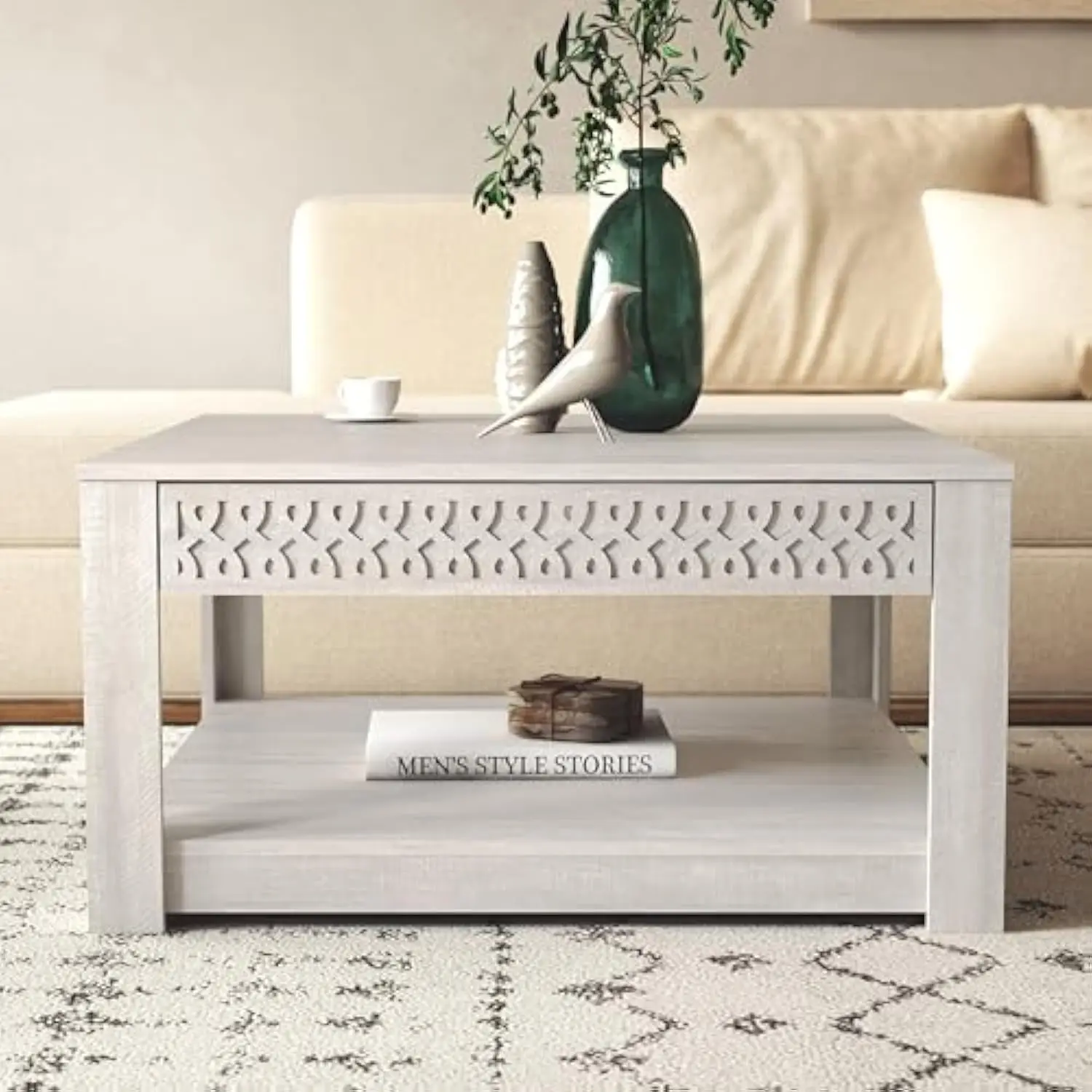
Today’s walnut coffee tables increasingly recognize that beautiful form can coexist with practical function. Innovative storage solutions address the realities of contemporary living—where living rooms often serve multiple purposes—without compromising aesthetic standards. These designs prove that utility and elegance aren’t mutually exclusive.
Lift-top mechanisms represent one of the most versatile innovations in coffee table design. These tables feature tops that raise and extend forward, creating an elevated surface perfect for laptop work, casual dining, or creative projects. When crafted from walnut, the mechanism is typically engineered to operate smoothly while supporting the substantial weight of the solid wood top. These designs are ideal for multipurpose spaces, particularly apartments or open-concept homes where the living room must accommodate work-from-home needs.
Hidden drawer systems offer more subtle functionality. These designs conceal storage compartments behind clean facades, maintaining a minimalist appearance while providing practical organization for remote controls, magazines, gaming accessories, and other living room essentials. The craftsmanship shines in the precision of these drawers—in quality pieces, you’ll find dovetail joinery, smooth-gliding hardware, and interiors finished to the same standard as visible surfaces.
Multi-tier designs provide visible storage while creating visual interest through layering. A typical configuration features a main surface with an open shelf below, often with varied dimensions that create dynamic negative space. These pieces excel at displaying design objects, books, or media components while maintaining accessibility. The rich tones of walnut add depth to these layered compositions, particularly in designs where the wood grain is intentionally matched or contrasted between levels.
The storage capacity of these functional designs varies considerably, from compact drawers suitable for small accessories to substantial compartments capable of housing throw blankets, board games, or media equipment. Premium examples balance capacity with proportion—even storage-focused designs should maintain elegant lines and avoid appearing bulky.
For those specifically seeking tables with practical features, exploring lift-top coffee tables reveals how functionality can enhance rather than detract from beautiful design. The best examples demonstrate thoughtful engineering that anticipates how people actually live with and use their furniture daily.
Curves and Contours: Round and Oval Designs
Round and oval walnut coffee tables bring a sense of movement and flow to living spaces that rectangular designs simply cannot achieve. Their continuous curves create a natural path for the eye to follow while eliminating the sharp corners that can be problematic in high-traffic areas or homes with young children.
Circular tables foster a more intimate, conversational atmosphere. Without corners to define a front or back, they invite people to gather around equally from all sides. Typical diameters range from 36 to 48 inches (91-122cm), providing ample surface area while maintaining a sense of proportion with surrounding seating. The continuous edge of a round walnut table showcases the wood’s grain in an uninterrupted band, often highlighting interesting figuring that might be less noticeable in rectangular cuts.
Classic round pedestal tables feature a central support rather than four legs, creating a sculptural silhouette and maximizing leg room underneath. When crafted from walnut, these designs often incorporate subtle details like gentle tapering or fluting in the pedestal, adding visual interest without overwhelming the clean form. The intersection between the pedestal and tabletop becomes an opportunity for skilled craftsmanship, with precisely fitted joints that demonstrate technical mastery.
Oval shapes offer a hybrid solution that combines the flowing curves of round tables with the additional surface area of rectangular designs. Particularly successful in narrower living rooms, oval tables typically measure around 48 inches (122cm) long by 30 inches (76cm) wide, providing generous usable space while allowing easier movement around their softened perimeter. Their elongated form naturally encourages seating arrangements along the sides rather than the ends.
Both round and oval tables dramatically impact traffic flow around the living area. Their curved edges guide movement smoothly through the space, eliminating the awkward navigation sometimes required around sharp corners. This makes them ideal for open floor plans or rooms where the coffee table sits in a central pathway.
For those exploring different table shapes, comparing round and oval mid-century coffee tables provides additional insights into how these forms function within various room layouts and which might best complement your existing furniture arrangement.
Artisanal and Custom Creations: One-of-a-Kind Statements
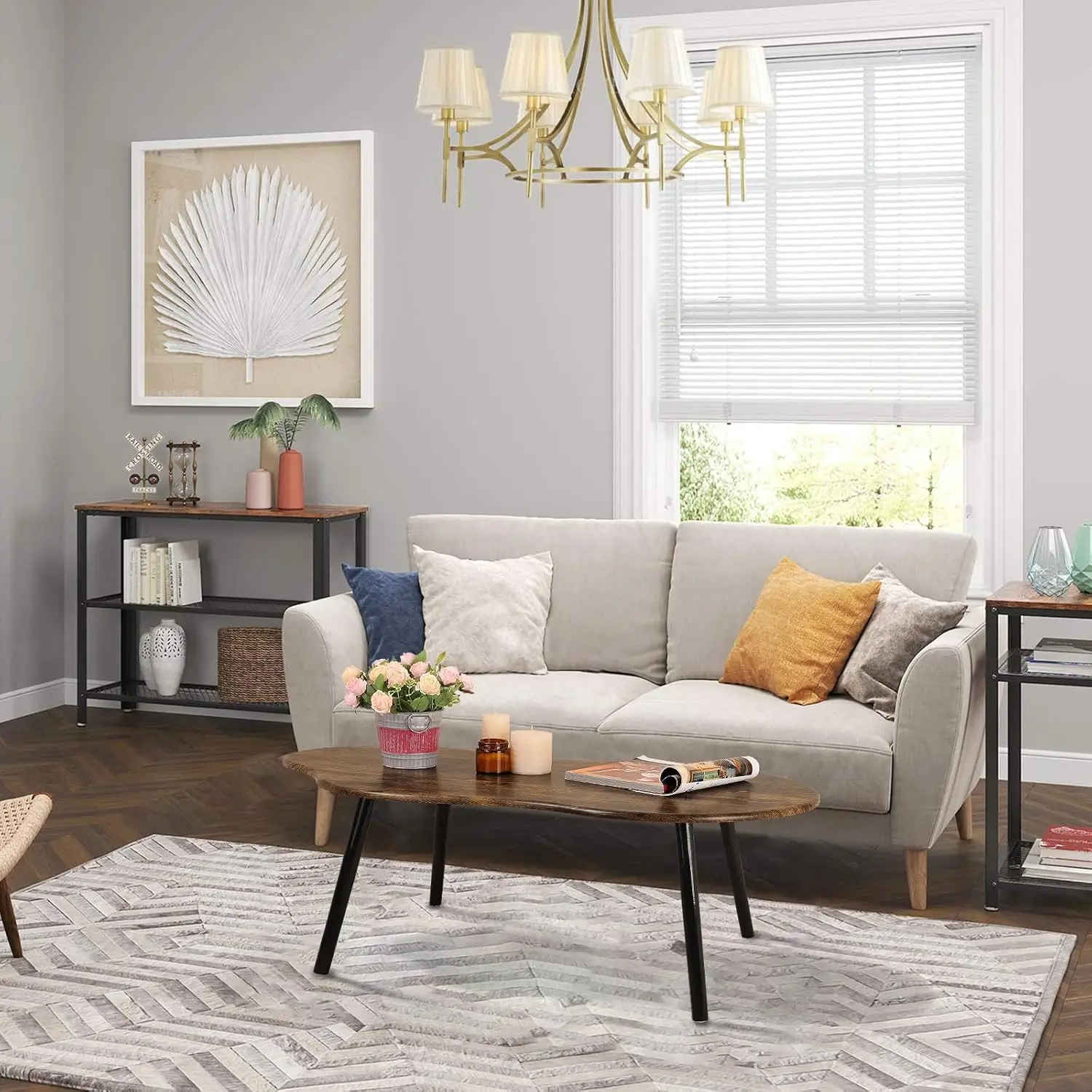
At the highest end of the walnut coffee table spectrum are custom and artisanal creations—pieces conceived as functional sculpture rather than mere furniture. These one-of-a-kind tables transcend simple utility, becoming focal points that define the entire character of a room.
Artisan-made walnut tables represent the pinnacle of woodworking craftsmanship. Unlike mass-produced furniture, these pieces reflect countless hours of skilled hand work, from the careful selection of exceptional lumber to hand-planed surfaces and traditionally executed joinery. The resulting quality is evident in details like perfectly matched grain patterns, seamlessly integrated wood movement accommodations, and flawlessly applied finishes that highlight rather than mask the material.
Mixed media compositions offer particularly exciting possibilities for artistic expression. Some artisans combine walnut with contrasting materials like blackened steel, brushed bronze, or cast concrete. Others incorporate elements like inlaid brass, stone, or colored resin to create visual accents that complement the wood’s natural beauty. These combinations often result in pieces that feel simultaneously contemporary and timeless.
Truly sculptural designs push the boundaries of what a coffee table can be. These pieces might feature organic, flowing forms that seem almost impossibly shaped from solid wood, challenging our expectations of furniture. Others employ parametric design—a computer-aided approach that generates complex geometrical patterns—resulting in walnut tables with intricate repeated elements or unexpected asymmetrical compositions that would be nearly impossible to design or execute manually.
When commissioning custom walnut pieces, collectors often develop collaborative relationships with furniture makers, resulting in designs that reflect both the artisan’s signature style and the client’s specific needs. Important considerations include space dimensions, intended use patterns, and the visual dialogue between the new piece and existing elements in the room. The design development process typically spans months, with artisans providing sketches, material samples, and sometimes scale models before beginning construction.
For those seeking further inspiration for custom pieces, exploring distinctive coffee table design approaches can help clarify your preferences before consulting with craftspeople about bespoke options.
Selecting Your Ideal Walnut Coffee Table: A Practical Guide
Finding your perfect walnut coffee table requires balancing aesthetic preferences with practical considerations about your space and lifestyle. This methodical approach will help you navigate the selection process with confidence.
Start with proper measurements to ensure appropriate scaling for your space:
– Height: Coffee tables should sit 1-2 inches (2.5-5cm) below your sofa seat height, typically 16-18 inches (40-45cm) from the floor
– Length: Aim for a table approximately two-thirds the length of your sofa (a 7-foot sofa pairs well with a 56-inch table)
– Clearance: Maintain 12-18 inches (30-45cm) between the table and seating for comfortable leg room
Material quality represents perhaps the most significant decision point when investing in a walnut table:
- Solid Walnut: Offers maximum durability, aging potential, and repair options; typically weighs more and carries a premium price
- Walnut Veneer: Provides the walnut appearance at a lower price point; quality varies dramatically based on veneer thickness (premium veneers measure 1/16 to 1/8 inch) and core material quality
- Engineered Options: Some contemporary designs use engineered walnut products like high-quality plywood for increased stability in certain applications
Finish considerations significantly impact both appearance and maintenance requirements:
– Oil Finishes: Create a natural matte look that highlights grain; relatively easy to repair but requires regular maintenance
– Lacquer/Polyurethane: Provides greater protection against spills and wear; available in matte to glossy sheens
– Specialty Finishes: Some tables feature cerused (white-filled grain), wire-brushed, or other specialized treatments that create distinctive visual effects
Price expectations should align with construction quality:
– Entry-Level: $400-800 for basic walnut veneer over engineered wood
– Mid-Range: $800-2,000 for solid wood with good construction
– Premium: $2,000-5,000+ for artisanal craftsmanship and distinctive designs
When evaluating construction quality, look for signs of careful craftsmanship:
– Consistent grain matching across visible surfaces
– Smooth, even finishes without bubbling or irregularities
– Precisely fitted joints with minimal gaps
– Solid wood drawer construction with dovetail joinery in premium pieces
For those specifically interested in rectangular formats, exploring rectangular coffee table options provides additional selection guidance tailored to this popular shape.
Styling Your Walnut Coffee Table: Design Harmony
Once you’ve selected your walnut coffee table, thoughtful styling enhances its impact within your overall interior design. The rich, warm tones of walnut provide a versatile foundation that complements numerous design approaches.
Color palettes that particularly enhance walnut’s natural beauty include:
– Cool blues and greens that create refreshing contrast with the wood’s warmth
– Neutral creams and taupes that allow the walnut to serve as the room’s main color statement
– Jewel tones like emerald, sapphire, or amethyst that echo the luxurious character of the wood
– Terracotta, burnt orange, or mustard yellow for warm, earthy harmony
When accessorizing your walnut coffee table, balance is key:
– Follow the rule of three—grouping objects in odd numbers creates more dynamic visual interest
– Vary heights and textures to create dimensional appeal
– Include at least one organic element like a small plant or natural material
– Consider negative space as an intentional design element rather than area to be filled
Materials that pair exceptionally well with walnut include:
– Brass or bronze metals for warm metallic accents
– Natural leather in cognac or camel tones
– Handmade ceramics in earthy or jewel-toned glazes
– Textural natural fibers like linen, jute, or wool
Seasonal refreshes keep your styling current:
– Spring/Summer: Introduce lighter elements, fresh flowers, and cooler accent colors
– Fall/Winter: Layer in warmer textiles, amber-toned glass, and deeper accent hues
For open-concept homes, your walnut coffee table can help define the living area through thoughtful styling choices. Position larger objects to frame the space visually without blocking sightlines to adjacent areas. The table’s styling should harmonize with nearby dining areas while maintaining its distinct identity.
Those seeking specific styling inspiration might find additional ideas in our guide to styling mid-century coffee tables, which offers principles that work beautifully with walnut pieces regardless of their specific design era.
Preserving Beauty: Essential Care for Walnut Furniture
Proper maintenance ensures your walnut coffee table remains beautiful for generations. Unlike disposable furniture, quality walnut pieces respond to careful attention with increasing character and beauty over time.
Daily and weekly care routines establish the foundation for long-term preservation:
– Dust frequently with a soft, lint-free cloth, moving with the direction of the grain
– Clean spills immediately, as liquids can penetrate even finished wood if left standing
– Use coasters, particularly with hot items or cold drinks that may cause condensation
– Avoid direct sunlight exposure, which can cause uneven fading over time
Recommended cleaning approaches maintain finish integrity:
– For regular cleaning, slightly dampen a soft cloth with water and immediately dry the surface
– For deeper cleaning, use products specifically formulated for finished wood
– Avoid all-purpose cleaners containing ammonia, silicone, or abrasives
– Test any new product on an inconspicuous area first
Environmental considerations significantly impact wood health:
– Maintain relatively consistent humidity levels (40-60%) to prevent wood movement
– Use a humidifier in winter if indoor heating creates excessively dry conditions
– Position tables away from heating vents, radiators, and air conditioning outputs
– Consider seasonal movement normal—solid wood may develop small variations with humidity changes
Addressing common issues promptly prevents lasting damage:
– For water rings on oiled finishes, try a mixture of equal parts vinegar and olive oil
– For light scratches in the finish (not the wood), specialty wax sticks in matching colors can fill the void
– For deeper scratches or significant damage, consult professional furniture restorers
Many walnut coffee tables benefit from periodic conditioning with appropriate products:
– For oil-finished surfaces, apply recommended conditioning oil every 6-12 months
– For lacquered or polyurethane finishes, use appropriate furniture polish sparingly
– Follow manufacturer guidelines for specialty finishes like cerused or wire-brushed surfaces
Understanding the specific features of quality coffee tables helps you provide appropriate care for your particular piece, ensuring its longevity and increasing value over time.
Mid-Century Modern Solid Wood Coffee Tables, Mid-Century Modern Teak Coffee Tables
$879.95 Select options This product has multiple variants. The options may be chosen on the product pageMid-Century Modern Danish Coffee Tables, Mid-Century Modern Oval Coffee Tables, Mid-Century Modern Solid Wood Coffee Tables
$390.05 Select options This product has multiple variants. The options may be chosen on the product pageMid-Century Modern Lift Top Coffee Tables, Mid-Century Modern Square Coffee Tables
$454.73 Select options This product has multiple variants. The options may be chosen on the product pageMid-Century Modern Large Coffee Tables, Mid-Century Modern Rectangular Coffee Tables
$603.26 Select options This product has multiple variants. The options may be chosen on the product pageMid-Century Modern Marble Top Coffee Tables, Mid-Century Modern Rectangular Coffee Tables, Mid-Century Modern White Coffee Tables
Price range: $163.28 through $189.22 Select options This product has multiple variants. The options may be chosen on the product pageMid-Century Modern Rectangular Coffee Tables, Mid-Century Modern White Coffee Tables
$605.68 Select options This product has multiple variants. The options may be chosen on the product page
Finding Your Perfect Match: Questions to Ask Before Purchasing
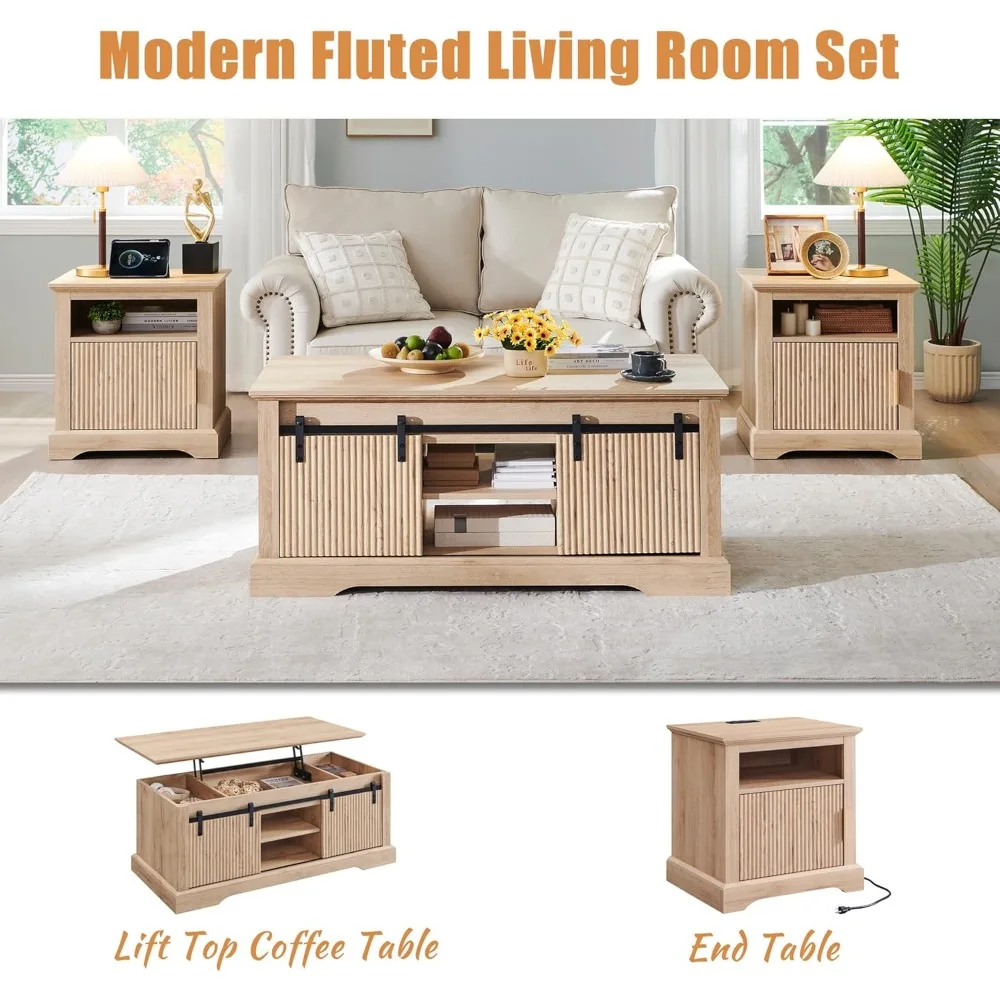
As you narrow your walnut coffee table search, asking the right questions helps ensure you make a choice you’ll appreciate for years to come. Consider these key inquiries before making your final decision:
Is solid walnut or veneer more appropriate for my needs?
Solid walnut offers maximum durability and aging potential but comes at a higher price point. Quality veneers (at least 1/16 inch thick over stable substrates) provide the walnut look more affordably and may actually offer greater dimensional stability for certain designs. Your decision should consider your budget, expected lifespan for the piece, and how the construction method affects the specific design you’re considering.
How will this piece age with my lifestyle?
Consider your household’s specific habits. Homes with young children might benefit from tables with rounded corners and durable finishes, while adult households might prioritize design details over maximum durability. If you frequently entertain, a larger surface area and potentially protective finishes make sense. For multi-functional spaces, storage components or adjustable features might be essential.
What construction details should I evaluate?
Quality construction reveals itself in the details. Examine how table components connect—better pieces feature traditional woodworking joints rather than just mechanical fasteners. Drawer construction is particularly telling; look for solid wood drawers with dovetail or finger joints rather than stapled particleboard. Underneath surfaces should be properly finished, even if not immediately visible. Weight often correlates with quality—substantial heft usually indicates solid materials.
How does this design complement my existing furniture?
Your walnut coffee table should establish relationships with other key pieces without matching everything perfectly. Consider proportions relative to your seating (a large sectional needs a substantial table, while apartment-scale furniture pairs better with more compact designs). Also evaluate height relationships—traditional seating typically pairs with taller tables (18-19 inches) while lower, lounge-style seating works better with coffee tables closer to 16 inches high.
For those considering geometric options beyond rectangular designs, exploring square coffee tables provides additional insights into how shape affects function and visual impact within your specific room configuration.
Beyond the Living Room: Versatile Placement Ideas
While coffee tables traditionally anchor living rooms, walnut’s versatility allows these pieces to function beautifully throughout the home. Creative placement expands their utility while showcasing their inherent beauty in unexpected contexts.
In home offices, a walnut coffee table can transform a conversation area into a casual meeting space. Positioned in front of a small sofa or pair of guest chairs, the table provides a surface for collaborative work while adding warmth to what might otherwise be a purely functional space. The natural tones of walnut create a welcome contrast to the technology typically dominating office environments.
Bedroom sitting areas gain sophistication with the addition of a scaled-appropriate walnut coffee table. In larger primary bedrooms with a seating arrangement, a coffee table—particularly one with rounded corners for safety in nighttime navigation—creates a morning coffee spot or evening relaxation zone that feels intentionally designed rather than afterthought. The warm wood tones contribute to the bedroom’s restful atmosphere.
Entryways with sufficient space benefit from the statement-making quality of walnut. A round or oval coffee table in an entry foyer creates an elegant landing zone for mail, keys, and decorative elements while establishing the home’s design tone from the moment guests enter. The substantial presence of walnut communicates quality and permanence.
In open-concept living spaces, strategically placed coffee tables can define functional zones without requiring walls. A walnut table placed between a sofa and chairs visually anchors a conversation area while maintaining the openness that makes these floor plans desirable. The substantial character of walnut helps these pieces hold their own in expansive spaces where lighter furniture might feel insubstantial.
For additional inspiration on integrating walnut pieces into varied interior styles, exploring how different styles complement mid-century modern furniture offers valuable insights, regardless of whether your walnut table is specifically mid-century in design.

